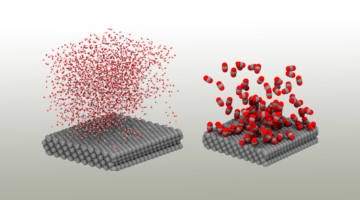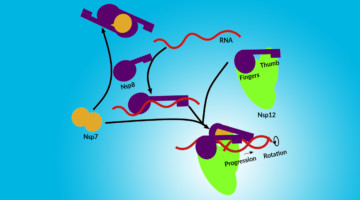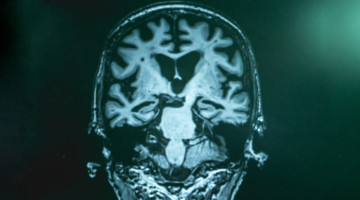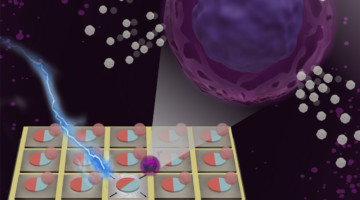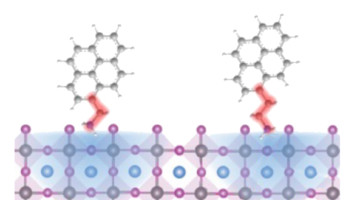Researchers electrochemically reduced CO2 to CO with nearly perfect selectivity over other products by adding an organic compound to the surface of a silver electrode. With theoretical analyses and ALS data, the work revealed the key role of the microenvironment in promoting the conversion of CO2, a greenhouse gas, into useful products. Read more »![]()
![]()
Science Highlights
Autonomous Data Acquisition for Scientific Discovery
Researchers at large scientific facilities such as the ALS have applied a robust machine-learning technique to automatically optimize data gathering for a variety of experimental techniques. The work promises to enable experiments with large, complex datasets to be run more quickly, efficiently, and with minimal human intervention. Read more »![]()
![]()
Assembly of the SARS-CoV-2 Replication Mechanism
Using a multimodal approach that included x-ray scattering at the ALS, researchers determined how components of the SARS-CoV-2 replication mechanism fit together. A better understanding of how this protein complex works provides insight into potential structural or functional weak spots to exploit for drug development. Read more »![]()
![]()
Nanoscale Metallic Particles Detected in Brain Tissue
Researchers detected nanoscale deposits of elemental copper and iron in brain tissues isolated from Alzheimer’s disease subjects. The discovery suggests new directions of study to determine the role that elemental metals might play in neurochemistry, neurobiology, and the development of neurodegenerative disease. Read more »![]()
![]()
Tuning Semimetallicity Using Thin Films and Interfaces
With support from ALS data, scientists gained new insight into a semimetal’s unusual electronic behavior. The work lays out a basic strategy for engineering the band structures of semimetallic compounds using dimensional confinement and reveals a new way of creating two-dimensional electron/hole gases by exploiting interfacial bonding. Read more »![]()
![]()
Label-Free Characterization of Organic Nanocarriers
A technique developed at the ALS enables accurate characterization of organic nanocarriers (molecules that encapsulate other molecules) without the need for disruptive labeling. The method will enable faster, more precise development of exciting new technologies, ranging from targeted drug delivery to oil-spill remediation. Read more »![]()
![]()
Artificial Spin Ice Toggles Twist in X-Ray Beams on Demand
ALS studies helped scientists understand how a nanoscale magnetic lattice (an artificial spin ice) acts as a toggle switch for x-ray beams with spiral character. The findings represent an important step toward the development of a versatile new tool for probing or controlling exotic phenomena in electronic and magnetic systems. Read more »![]()
![]()
Guiding Target Selection for COVID-19 Antibody Therapeutics
Protein-structure studies helped demonstrate that the primary target of antibody-based COVID-19 immunity is the part of the virus’s spike protein that can most easily mutate. The work anticipated the rise of SARS-CoV-2 variants and guides the selection of antibody therapeutics that are likely to be more resistant to immune escape. Read more »![]()
![]()
Programmable Micromagnets for Single-Cell Sorting
Researchers demonstrated that electrically induced mechanical strain can control the magnetic state of tiny magnets used to sort biological cells. The work lays the foundation for a programmable, single-cell sorting platform to support a wide variety of biotechnology applications, including personalized cancer treatments. Read more »![]()
![]()
A Properly Tailored Tail Boosts Solar-Cell Efficiency
With the help of structural insights from the ALS, researchers optimized the fit between organic and inorganic ions in a perovskite solar-cell material. The work increased the material’s power-conversion efficiency and stability and opens up a new avenue for improving the current-carrier dynamics of a promising class of materials. Read more »![]()
![]()
- « Previous Page
- 1
- …
- 7
- 8
- 9
- 10
- 11
- …
- 27
- Next Page »
